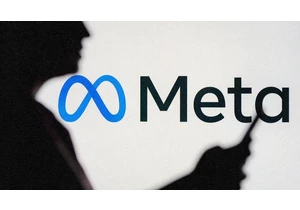From its centered task bar to its revamped Start and Quick Settings menus, the recently released Windows 11 includes some of the most obvious changes to the venerable operating system since Windows 8 launched nearly a decade ago. A response to the iPad, 2012’s Windows 8 sported Microsoft’s “Metro” user interface, with a Start screen of large, blinking Live Tiles and apps designed around touch-friendly controls and swipe gestures. These elements were grafted on top of Windows’s traditionally mouse-driven user interface to create more visual consistency with the company’s phone operating system, Windows Phone, even when running on PCs without touchscreens. The result was a visual design language katakana, the Japanese alphabet used to spell borrowed, foreign words. Ultimately, Windows 8’s approach proved untenable, and Microsoft’s exit from the phone market made cross-platform consistency less of an imperative for the company. 2015’s Windows 10 relegated Live Tiles to a portion of the Start menu, and Windows 11 finally marks their departure. But Windows 8’s Metro apps were indeed more touch-friendly than traditional Windows apps. Microsoft has continued to struggle with balancing the needs of dense user interfaces honed over decades, such as Adobe’s video editing stalwart Premiere Pro, with the slick approachability of iPad apps such as up-and-coming video editor LumaFusion. In Windows 11, Microsoft has done much work here behind the scenes to resolve this issue, enabling developers of traditional apps to make their creations more touch-friendly. For example, when using a Windows 11 device such as Microsoft’s new Surface Laptop Studio, which can bring the screen forward to cover the keyboard, elements such as the taskbar icons spread further apart so that they’re easier for fingers to hit, as do toolbar buttons in Microsoft Office apps. Windows 11 makes other nods to touch-friendliness, such as rotating tiled apps when a device’s orientation changes. It also supports Android apps. However, its Windows Explorer file manager retains many visual inconsistencies. If, for example, you need to change network settings, the surface-level interface elements you see sport large text and a reorganized, simplified layout. This design is based on Microsoft’s Fluent Design guidelines, which incorporate such modern cues as animation, responsiveness to multiple input methods, and shading. But if you drill down another level—say, to disable a network interface—you’re dropped into an interface that’s remained intact since Windows 95. Things get even stranger when it comes to Explorer’s context menus. Right-click on an icon, and you’re presented with a Fluent-style menu that includes only some of the extended options you might have had in Windows 10. To see them all, you need to select “More Options,” which gives you the old-style menu. This can defeat the purpose of context menus, which is to provide quick access to operations. Of course, registry hacks have quickly surfaced to bring back the original context menus. In the years since Microsoft’s first attempt to blend a touch interface into an environment honed for mice and keyboards, its rivals have faced similar dilemmas as touch-first apps infiltrate all major desktop operating systems. Google, which has long supported Android apps in Chrome OS, recently previewed Android 12L, which focuses on optimizing Android apps on large displays such as those on Chromebooks. And Apple now supports iPhone and iPad apps on Macs that use its own chips, which will soon be in every new Mac. Even though Google is pursuing Chrome-based 2-in-1s with devices from Lenovo and HP while Apple remains steadfast in keeping fingers off of Mac screens, it’s natural to conclude that all three of the major desktop OS companies will want to blur the distinction between where apps come from and how they look and operate, at least when sharing a platform with established conventions. As for Microsoft, Windows 10—once characterized by the company as the “last version” of Windows because it was transitioning to small updates on a rolling basis rather than releasing periodic blockbuster upgrades—still had an unprecedented run of six years. Why, then, couldn’t Microsoft get around to updating its legacy dialog boxes in that time, thus setting an example for its developers by fully embracing its own modern design guidelines? One possible explanation is that the company was more focused on cleaning up prominent elements such as the Start menu and taskbar icons than digging deep into settings that are often explored only by more technical users. IT professionals and power users may have developed macros that break if some of Windows’s older configuration options were redesigned. Or perhaps those stubborn user interface elements are slated for replacement (long rumored for the tenacious Control Panel) and so it doesn’t make sense to invest much in sprucing them up. Regardless, Windows 11 has still not returned to that point of optimal consistency it exhibited before Windows 8. And though Microsoft’s most famous product is tilting ever closer toward recapturing the finger-friendliness of Windows 8’s Metro approach, it remains to be seen how many developers of complex professional apps—with their myriad tools, dizzying configuration options, intricate user interfaces, and millions of habituated users—would be willing to embrace a touch-optimized experience.
Accedi per aggiungere un commento
Altri post in questo gruppo

“Meta profits, kids pay the price,” was the message delivered by dozens of grieving families at the doors of Meta’s Manhattan office on Thursday.
Forty-five families traveled from

The world’s auto industry is getting a shake-up from Chinese automakers that

There’s Blue Sky and then there’s Bluesky.
Blue Sky, a paper goods company

Google’s profits soared 50% in this year’s opening quart

One of the central arguments in the ongoing antitrust trial against G

The AI revolution is redefining business and tech leadership—and no one is standing more squarely on the front lines than product leaders.
Once seen as a behind-the-scenes role, the CPO

It has taken a little over five months and has been
